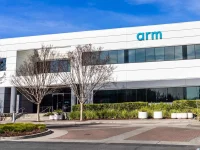Chris Curry and Hermann Hauser started Acorn Computers in Cambridge in 1978. The small company won a deal to make BBC Micro computers for UK classrooms. This simple contract sparked a tech revolution that changed everything. Acorn made an unusual move for such a tiny business—they decided to create their own processor.
Engineers Sophie Wilson and Steve Furber designed a 32-bit chip in 1980. Despite working with little money, they finished the ARM1 in 1985. The processor used just 25,000 transistors on a 3μm process. It ran on very little power but worked amazingly well. ARM celebrates 40 years this April with a huge achievement—they shipped their 250 billionth chip.
The power-saving design came from necessity, not brilliant planning. Acorn lacked cash for expensive ceramic packaging, forcing them to use cheaper plastic. The chip needed to run cool to work in this basic package. They built it extra power-efficient to stay safe because they had no tools to measure power use. Today, ARM chips power modern devices like the upcoming MediaTek Dimensity 9500. The company plans to expand into data centers, AI, edge computing, and green technology.
Engineers Sophie Wilson and Steve Furber designed a 32-bit chip in 1980. Despite working with little money, they finished the ARM1 in 1985. The processor used just 25,000 transistors on a 3μm process. It ran on very little power but worked amazingly well. ARM celebrates 40 years this April with a huge achievement—they shipped their 250 billionth chip.
The power-saving design came from necessity, not brilliant planning. Acorn lacked cash for expensive ceramic packaging, forcing them to use cheaper plastic. The chip needed to run cool to work in this basic package. They built it extra power-efficient to stay safe because they had no tools to measure power use. Today, ARM chips power modern devices like the upcoming MediaTek Dimensity 9500. The company plans to expand into data centers, AI, edge computing, and green technology.












